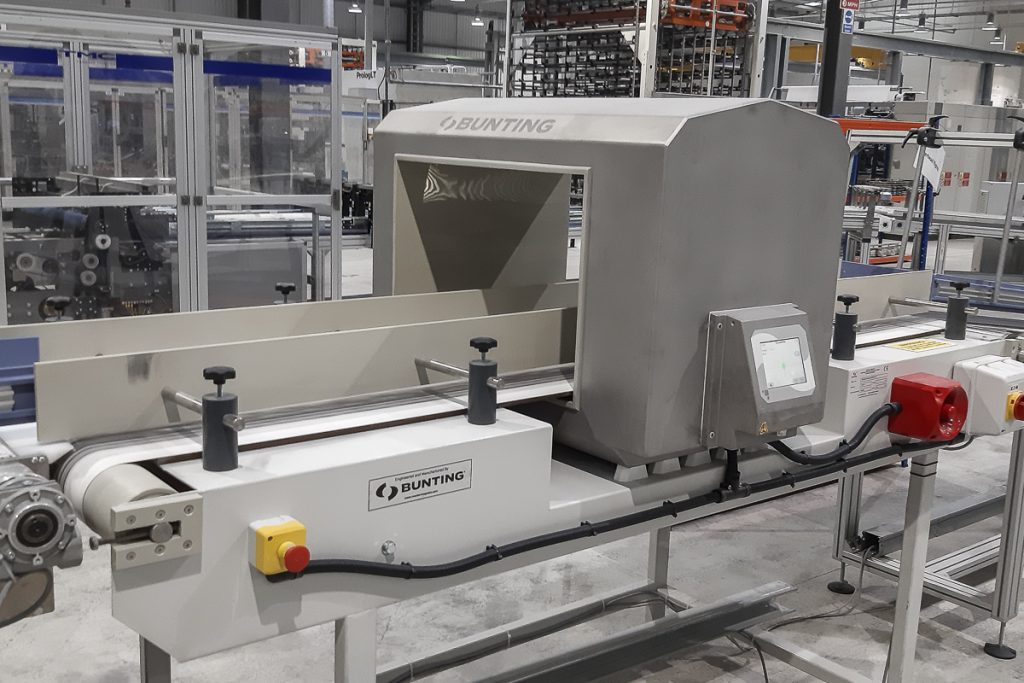Metal Contaminated Dairy Products
By Paul Fears | 02 February 2022
The UK Food Standards Agency has reported that Yoplait UK has recalled Yoplait Frubes Strawberry, Red Berry and Peach Variety Pack because the product may contain small pieces of metal (January 2022). Small metal pieces have been found in the peach flavour within the multipack, which makes this product unsafe to eat.
- Food Standards Agency Food Alert – Yoplait UK recalls Yoplait Frubes Variety Pack because it may contain small pieces of metal
The news alert comes less than 1 month since another dairy related metal-in-food incident, with St Helen’s Farm recalling St Helen’s Farm Goats Butter because the product may contain small pieces of metal.
Origin of Metal Contamination
Although the origin of the metal contamination in both the Yoplair and St Helen’s Farm alerts is unconfirmed, it is recognised that there are a number of locations within a dairy plant which could introduce rogue metal.
Commonly, metal contamination arises from three sources:
- Process equipment wear and tear or failure. This includes the failure of a pump, breaking of a screen, etc
- Introduced at the beginning of the process (i.e. with the fruit or milk)
- Introduced in the process, usually by accident by a plant operator or during maintenance
Although controls to prevent introduction of metal at the beginning or within the process are successful, equipment failure means that metal contamination often occurs within a food manufacturing process. Hence the reason for the installation of metal separation and detection equipment.
Metal Detectors in Dairy Operations
Ensuring metal-free end products starts where the milk product enters the process. A pipeline Metal Detector, often preceded by a Liquid Pipeline Magnet, finds and removes any rogue metal contamination.
- Technical Product Details: Pipeline Metal Detectors
- Technical Product Details: Liquid Pipeline Magnets
However, the most critical Metal Detector location is once the product is packed and awaiting despatch. Packed products feed through the tunnel of a high-sensitivity balanced-coil Metal Detector on an integrated conveyor. Small metal contamination detected by the metal detector coil triggers an alarm, which stops the conveyor. The contaminated product or batch is removed and either disposed of or unpacked to check individual items.

The meTRON 07 CI Metal Detector meets the high-specifications for operating in clean environments such as required for food processing. The detector head features integrated electronic control electronics and continuously detects all tramp metal (ferrous, stainless-steel, aluminium, copper, brass, etc).
There are a wide range of aperture sizes (through which the conveyor or chute feeds) to suit specific customer requirements. This model of metal detector is commonly used for quality inspection to meet the requirements of ISO9000, HACCO, IFS, BRC, SQF and other standards.
- Technical Product Details: meTRON 07CI Metal Detector
Preventing Metal-Contamination Issues
The precise details of the Yoplait and St Helen’s Farm plants are unknown. Metal contaminated food reaching the trader or consumer occurs when there is insufficient equipment to detect or remove metal, or if installed equipment fails or has been incorrectly adjusted.
Commonly, external a regular audit and servicing of any installed Metal Detector features as part of the regular maintenance plan.
Related Metal-in-Food Technical Articles
For further information on Metal Detectors and Magnetic Separators used to find and remove metal contamination in dairy products or for any food processing application, please visit our website or contact us on:
Email: Gordon Kerr at GKerr@buntingmagnetics.com
Telephone: +44 (0) 1527 65858
Lead photo sourced from PxHere
For further information or to discuss a specific project, please complete the following form